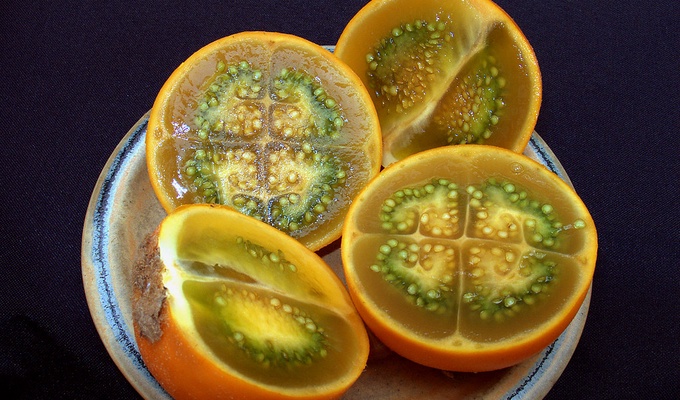Naranjilla (Solanum quitoense), also known as lulo in Colombia and by other regional names such as obando and nuqui, is a tropical perennial shrub in the nightshade family (Solanaceae), native to the Andean regions of Ecuador, Colombia, and Peru.
Cultivated primarily for its distinctive, tart, citrus-flavored fruit, naranjilla is widely used in juices, ice creams, preserves, and regional culinary preparations.
Naranjilla juice is rich in ascorbic acid and forms the basis of several traditional beverages and desserts in Latin America.
The plant reaches up to 2.4 meters in height, with large, purple-tinged leaves and orange, tomato-like fruits that contain greenish pulp. It thrives in cool, humid climates at elevations from sea level to 2,400 meters but is highly sensitive to frost, excessive heat, and strong sunlight.
Its commercial cultivation is limited by susceptibility to pests such as root-knot nematodes and fungal infections, though hybridization and grafting techniques are employed to improve resistance.
